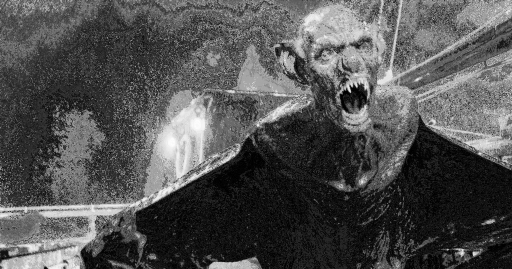“The Last Voyage of the Demeter” has a terrible title, but in theory the film sounds intriguing. It wants to be an old-fashioned monster movie, the kind they used to produce back when horror films were actual movies, made with the stodgy well-carpentered rhythm that any movie was made with. “The Last Voyage of the Demeter” is set in 1897, and for most of it we’re aboard a large wooden ship with multiple sails — the Demeter, a handsome relic, since this is already the era when metal ships were coming in — that’s sailing from Bulgaria to London. The film moves slowly and deliberately, and it’s been shot like some studio sea-voyage period drama from 1966. Much of it is incredibly, knowingly square, with each crew member defined by one or two traits. But this is not just any ship, or any monster.
The film was adapted from the “Captain’s Log” section of Bram Stoker’s “Dracula,” which chronicles what happens after Dracula stows himself aboard the Demeter to travel to London. There are 50 shipping crates aboard, all shaped like coffins and filled with dirt. And Dracula haunts the vessel like the most spectral of demons — or, at least, he did in the novel, and in the shipboard sequence of “Nosferatu” (1922), where Max Schreck famously played the vampire as a skeletal nightmare zombie aristocrat with sticklike teeth and febrile eyes staring out of his bald rat’s head.
The strange thing about “The Last Voyage of the Demeter” is that the old-fashioned atmosphere goes right out the window whenever Dracula shows up. In this one, he’s a fast-moving goblin-like creature, with a devil’s head atop a spindly body, which makes him resemble a medieval stone gargoyle crossed with Gollum crossed with some razor-toothed animalistic demon out of a Jason Blum horror movie. He’s played by an actor (the creature specialist Javier Botet), but mostly he seems a product of the visual-effects department. There are shock cuts and savage montages as he rips into the throat of a crew member.
Historically, few monsters are more human than Dracula (that’s why he’s such a powerful metaphorical figure), and you’d think a film that so meticulously set itself up as an antique shipboard yarn would have paid homage to that side of Dracula. You’d think it would have tried to make him a touch…poetic. That’s certainly what I would have expected from the Norwegian-born director André Øvredal, who in a movie like “Trollhunter” showed that he could cast a spell of ominous fairy-tale weirdness. “Dracula,” in its deathly way, is a fairy tale.
But “The Last Voyage of the Demeter” is strictly prose, and rather plodding prose at that. I appreciated the film’s willingness to take its time, but as Dracula knocks off one crew member after the next, we seem to be watching some rotely garish and not all that scary 19th-century version of “Alien,” or maybe “Mutiny on the Bounty” remade as a slasher film.
Most of the performances are corny enough to feel at home in a pirate movie. There’s the noble Old World captain (Liam Cunningham), the nasty Russian (Nikolai Nikoleff), the callow ladykiller (Chris Walley), the paranoid captain’s mate (David Dastmalchian), the addled chef (Jon Jon Briones), and the captain’s innocent young son (Woody Norman). But Corey Hawkins, who has the lead role of Clemens, a physician trained at Cambridge who’s been shut out of medicine because of his race, has a saturnine glare and a lithe quickness of mind the movie could have used more of. Clemens believes in science and nature; he’s in thrall to learning about the world. The presence of a vampire kind of messes with his view, and the drama, what there is of it, emerges from how the film makes this demonic intrusion feels unprecedented.
Clemens discovers a stowaway, Anna (Aisling Franciosi), who is catatonic with infection, and he uses infusions of his own blood to nurse her back to life. But she never completely recovers, and the other crew members keep showing up as clawed mincemeat. They might survive for a while, but then, instead of turning into vampires, each bitten person has a moment of spontaneous combustion, with embers rising out of their bodies to consume them. That’s the most poetic thing in the movie. The rest of the time, “The Last Voyage of the Demeter” is too explicit, too dawdling yet rapid-fire, too much like other horror films.
Read More About:
Source: Read Full Article

